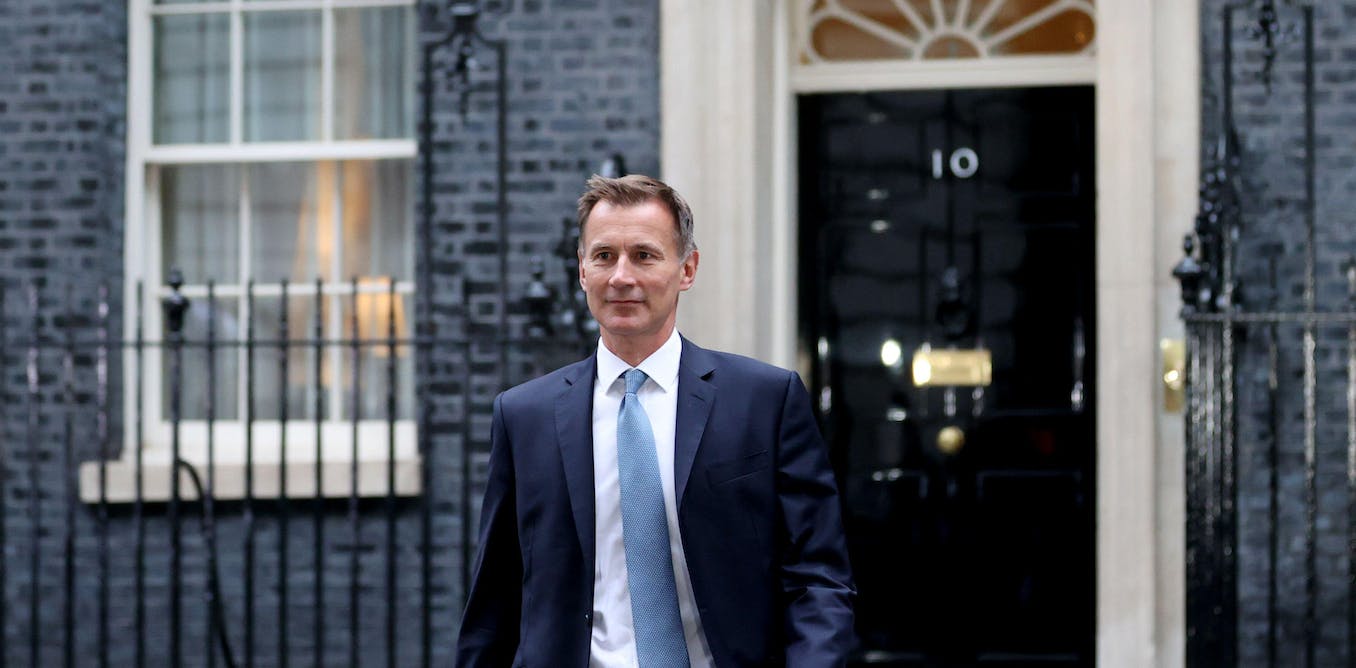UK chancellor Jeremy Hunt’s spring budget is a tricky one in terms of timing. Having announced a set of steadying measures in the autumn statement after the Truss/Kwarteng debacle, this budget is likely to be the last but one before a 2024 general election. This makes it a little early for eye-catching tax cuts or business boosts.
Instead, Hunt will probably give a strong indication of how the government intends to tackle the cost of living crisis and deliver on the five pledges made recently by the prime minister, Rishi Sunak – namely to halve inflation in 2023, grow the economy, reduce national debt, cut NHS waiting lists and pass new laws to prevent small boats of immigrants. So what’s on the cards?
Falling living standards
To help struggling households, Hunt is likely to extend the energy price guarantee capping the average household bill at £2,500 for at least another three months – by which time many believe the price of power will be falling anyway.
This will probably be accompanied by an edict preventing firms from charging slightly higher tariffs to the 4 million people on prepayment meters, reducing these households’ bills by an average of £45 a year. The government is also likely to help motorists by freezing fuel duty for a 12th consecutive year and extending the temporary 5p reduction on petrol duty introduced a year ago.
But these measures will hardly tackle the cost of living crisis alone. A forecast by the Resolution Foundation suggests that the average standard of living will drop by 4% in 2023-24 after a 3% fall in 2022-23 (the exact measure is income after housing costs for working households).
Rents are rising fast and higher interest rates are driving up many homeowners’ mortgage payments. One in seven people say they are skimping on food. Meanwhile, wages are still rising too slowly, despite record low unemployment. Against an annual inflation rate of around 9%, private sector wages rose by around 7% in the three months to December 2022, while the public sector rise was less than 4%.
Avpics/Alamy
After months of holding firm on public sector wages, the government may now agree a one-off lump sum pay increase for 2022-23 and possibly an increase in the wage offer for the coming year from 3.5% to 5%. Yet it is by no means clear that the Treasury will provide additional funding, meaning these increases would require “efficiency savings” in already squeezed budgets. Assuming this included the NHS, it would threaten Sunak’s goal of reducing waiting lists and caring for people more quickly. So this is one to watch closely.
Going for growth?
The prime minister’s key objective is growing the economy and “creating better-paid jobs and opportunity right across the country”. This is going to be a real challenge when forecasters expect a modest fall in GDP in 2023, albeit less than previously projected.
Getting more people into the workforce would boost the economy. For example, nearly half a million workers have left the labour market since the pandemic, primarily through illness.
To get more people on benefits back to work, the government is likely to use carrots and sticks. This could mean more training support for older workers, plus making it easier for claimants to keep receiving benefits if they get a job, while equally getting tougher on those refusing offers of work. The government will probably also try to encourage pension saving by increasing the relevant tax-free allowances, while discouraging early retirement by revising the rule that allows people to draw down their pension pot at age 55.
Another option for boosting the economy is subsidising childcare, already the most expensive in Europe, to get more women into the workforce. An overall increase in childcare support has been ruled out as too expensive, though Hunt is expected to offer some extra help for parents on universal credit.
Allowing more workers into the country is a third possibility, particularly in critical sectors with labour shortages such as construction, hospitality and nursing. Notice that while the government promises to crack down on illegal migration, it is preparing to allow more construction workers from abroad, while also running a recruiting drive for foreign nurses. I’m not sure we’ll see more from Hunt in this area in the budget, however.

Ant Clausen
Then there is the big problem that workers and businesses are not producing as much as they could. UK productivity has fallen behind many competitors, and solving this problem is the key to stronger and sustained economic growth, leading to workers receiving higher pay.
This involves getting businesses to invest more in the latest technologies. Investment has been falling for some time, lagging other G7 nations. Hence many want to scrap the planned rise in corporation tax – yet this is unlikely because the increased revenues are crucial to the government’s fiscal strategy. With Labour and business both calling for more investment support, the government is more likely to tweak the rules to allow more investment to be deducted against tax.
The government must also play its part in boosting infrastructure. The recently announced further delay to its largest infrastructure project, HS2, has not done much to boost business confidence that the government can deliver its side of the bargain.
Hopes for the future?
The government will doubtless point to some glimmers of hope. Inflation is projected to fall sharply in the summer as the huge increases in power prices in 2022 drop out of the calculation – even though they will still be three times higher than before the crisis. This would meet another of Sunak’s five objectives, though recent disappointing inflation numbers elsewhere are a bit of a caveat.
Government borrowing in 2022-23 is likely to be £30 billion lower than previously forecast, boosted by higher tax receipts and lower government spending on energy support and other areas. If tax receipts continue to grow, it could give the government further headroom to help business and cut taxes in the autumn budget.
On the other hand, it’s going to be a close call whether the government can meet the final Sunak target of reducing the national debt in the coming years. By 2027-28 the government is expected to be in surplus by just £15 billion out of total spending of over £1 trillion.
The prime minister came into office with a reputation for economic competence and gained credibility by swiftly reversing the economic policies of the Truss government. But unless he can improve the long-term growth potential of the economy before the election, he may struggle to convince the electorate that they will be better off under a Conservative government.




